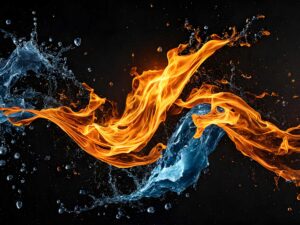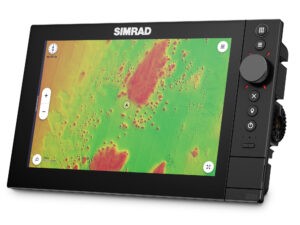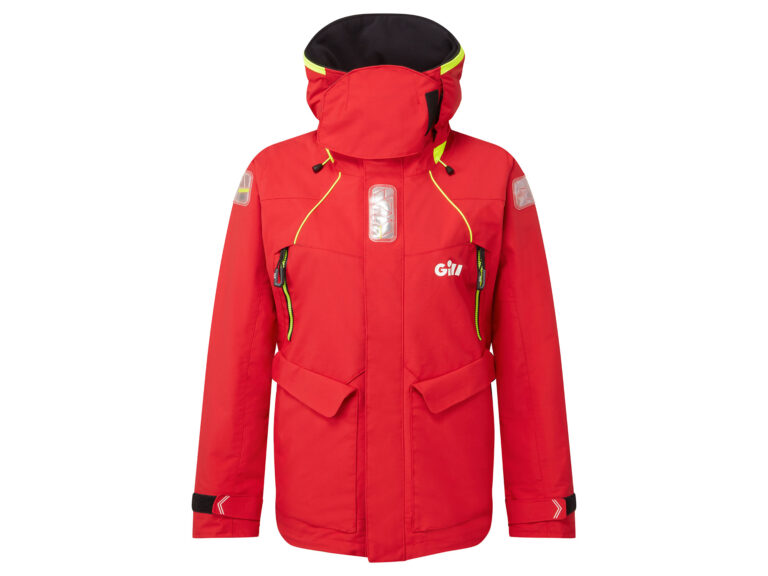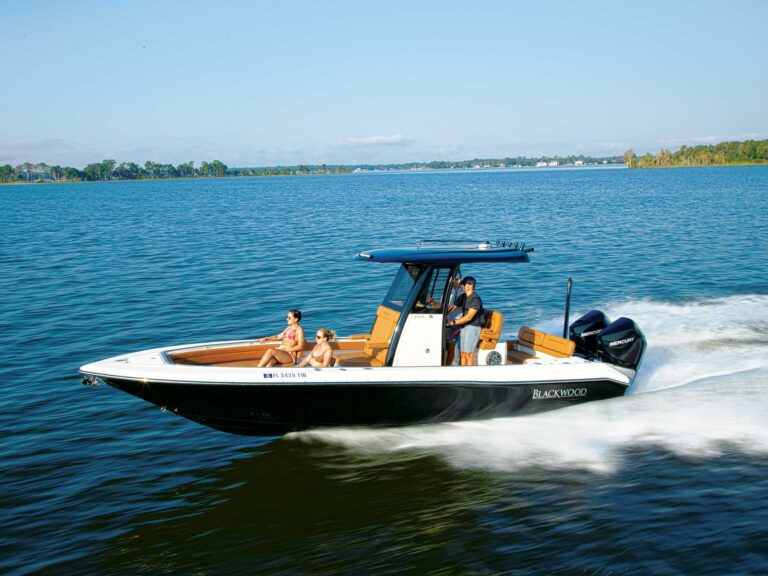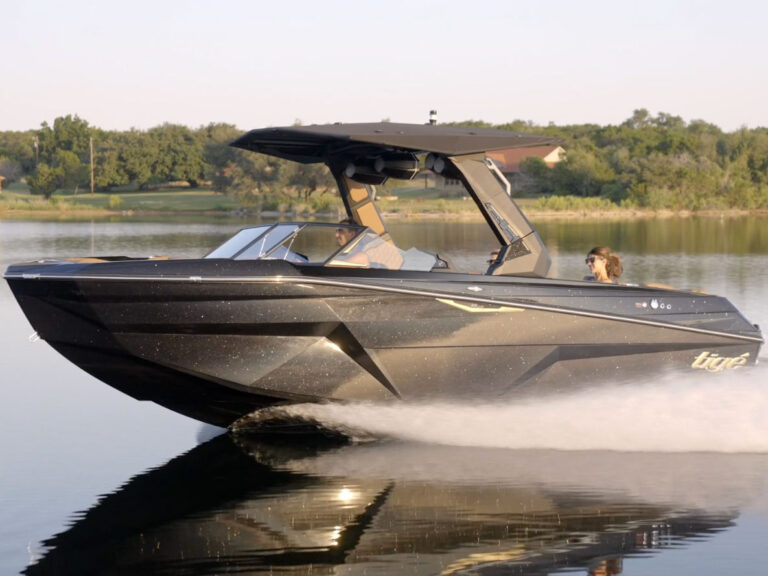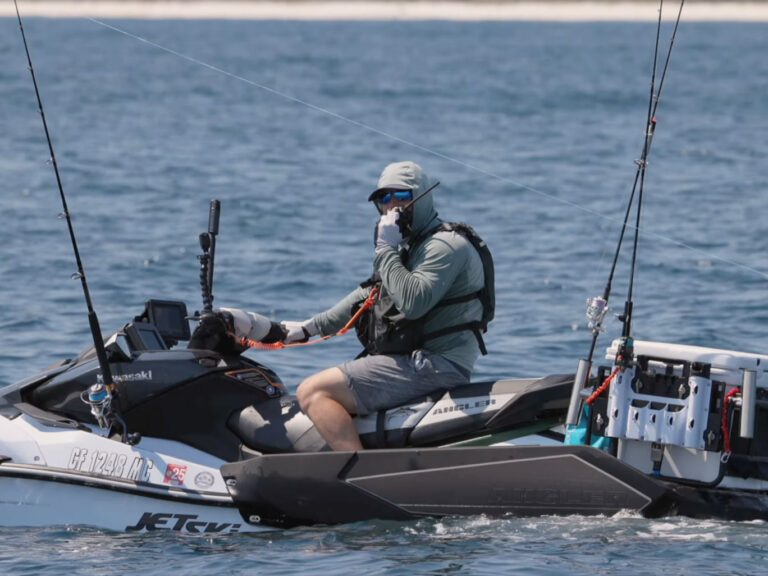
A boat carving through glassy waters on a cloudless morning at sunrise is a beautiful thing. No doubt you think your boat — no matter what the make and model — is a sight for sore eyes. But when you take a snapshot it never looks as good as the one in Boating. Yours are bleached out, overexposed, rife with shadows, boxy or blurry or have any number of issues related to bad photography. Odds are it’s how you shot it. We interviewed four of the best photographers in the world at shooting boats to help you get the money shot when photographing yours.
For specs on four of the newest POV cameras be sure to check out BoatingLAB’s comparison.
The Photographers
Bill Doster (billdoster.com) – Staff photographer Doster has been shooting boats for more than 16 years and takes most of Boating‘s cover shots.
Tom King (tomkingphotography.com) – Since 1977, King has produced hundreds of magazine covers and catalogs for dozens of boat companies.
Forest Johnson (forestjohnson.com) – Johnson has more than 1,500 covers, and many awards, to his credit since 1981 — as well as many catalogs.
John Linn (adventurecreative.com) – Linn’s been shooting boats for editorial and promotional purposes since 1996.
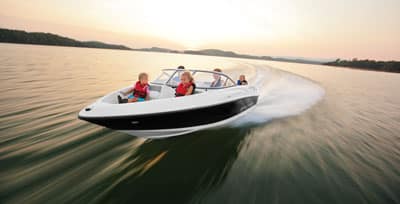
Running Shots
“The first thing I always do is look for calm water. It feels right and looks right to your eye.” — John Linn
“Light plays an important role. Keep the light at your back, and shooting in subdued early morning light is always pretty.” — Forest Johnson
“Shoot early or late for the best light.” — Tom King
“The most popular and most revealing photo of a boat is a three-quarter stern shot taken from a higher level.” — Forest Johnson
“Shooting from a low level you have to be aware of the wake the boat is throwing. Get ahead of the boat so it’s not lost in spray.” — Forest Johnson
“With bigger boats, as the sun gets high, you start getting shadows on the bow and losing the shape.” — Bill Doster
“The camera cannot judge speed, so the attitude of the boat has to dictate what the picture is. A Cigarette needs to be flying. The more out of the water the boat is, and the farther back the water breaks, the faster it looks in the shot.” — Forest Johnson

Good Things to Know
“It’s less about cool gadgets and more about lighting and the mood.” — Tom King
“Don’t forget the two-thirds rule. You don’t want your subject in the dead center of the shot.” — Bill Doster
“Boating is usually a contrasting situation. The reflection of light off the water and the boat will fool your camera and make the shot too dark. Drop the aperture [f-stop].” — John Linn
“It’s tough to tell from the viewfinder when you’re outside, so check your camera’s histogram. If it drops off a cliff to the right, you’re overexposed.” — Forest Johnson
“Experiment with angles. Shoot from as high or as low as you can get. Shoulder height is the worst.” — John Linn
“Everyone notices if your horizon line isn’t right. Make sure it’s either dead on (horizontal) or disproportionally tilted.” — John Linn
“Zoom magnifies shake so you have to increase shutter speed.” — Bill Doster

Lifestyle Shots
“Any time you’re shooting in the middle of the day, use fill flash; otherwise you’ll lose facial features. Guys in hats will look like raccoons.” — Forest Johnson
“Shooting with the sun behind people [backlighting] brightens things up and keeps them from squinting.” — John Linn
“Pre-focus your point-and-shoot to speed up the shutter speed for shots of people tubing or dolphins jumping off the bow.” — Tom King
“Choose a camera with a wide range of focal length. Most of your shots will be wide-angle or with a long lens with very little in between.” — John Linn
“Focus on a person’s eyes or even eyebrows. If they’re in focus, everything else can be a little softer and it will still look good.” — Forest Johnson
“Keep the camera ready. Think of what you’ll miss if it’s not.” — Bill Doster
“Watch the background. Make sure there’s not too much distraction taking away from the subject.” — Bill Doster

Detail Shots
“When shooting under a T-top or in a cabin, don’t forget to use fill flash to capture detail.” — Bill Doster
“The critical thing about shooting a boat is things reflect and can fool your camera. Try working in manual settings to control your shutter speed, film speed and f-stop to get the right exposure.” — Forest Johnson
“Detailed shots are usually boring without people in them.” — Tom King
“If your camera has an auto-bracket setting, use it to take the same photo at three different exposures and go with the one that looks best.” — John Linn
“Better to shoot too dark. You can fix that later and still have detail, but if a shot is overexposed you’ve lost it.” — Forest Johnson

Photography Terms
Aperture (f-stop) is the size of the lens opening. The smallest f-stop lets in the most light; the light gets cut in half with each click to a larger f-stop. Aperture controls depth of field.
Depth of field determines the portion of the photo that is in focus. Higher f-stop numbers allow larger depth of field, so most of the photo is in focus. Smaller f-stops create a shallow depth of field, in which the main subject is in focus but the background is blurred.
Fill flash forces a camera to add light to a shot. It’s useful in backlit or high-noon situations, or when the camera is “fooled” by surrounding light and isn’t picking up details. It’s commonly a “one-touch” camera feature.
ISO is the film speed. In a digital world it’s a measurement of the shot’s sensitivity to light. Use lower numbers for bright light and outdoor conditions; higher numbers are for conditions with low light.
Shutter speed is how fast the lens shutter opens and closes. It dictates exposure. Use faster speeds for capturing action shots.
Bracketing — Cameras with automatic bracketing features take three photos on the same shot — one with a darker exposure, one with a middle exposure and one brighter. This feature is good insurance to make sure the shot you want is not too bright or too dark.

3 Killer Apps
Camera Plus (free, iTunes)
Anti-shake feature prevents blur. Also has cropping, filters and big-button shooting features.
Fast Camera ($1.99, iTunes)
Rapid-fire shooting as soon as you open the app, and it keeps shooting until you press the stop button.
Big Lens ($0.99, iTunes)
Changes an existing photo’s depth of field. Creates images comparable to a DSLR (digital single-lens reflex) camera.

